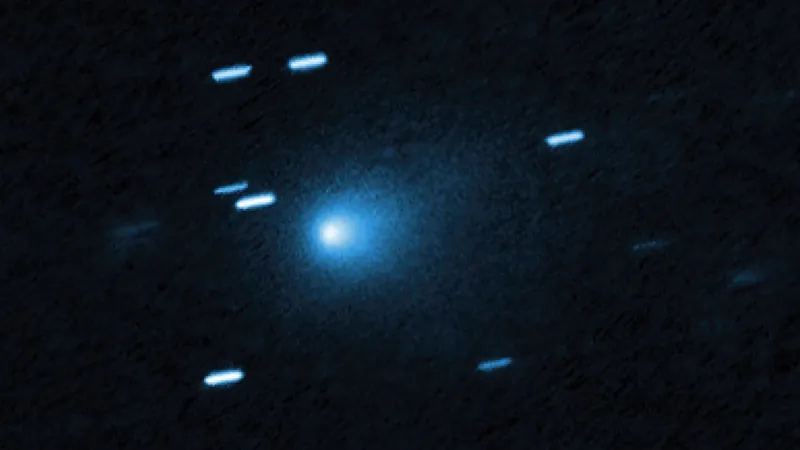
Mystery of Interstellar Comet 3I/ATLAS Unveiled: Carbon Dioxide Fog Discovered!
2025-09-04
Author: Ling
A Comet Unlike Any Other
On July 1, 2025, astronomers from the ATLAS project in Chile made a groundbreaking discovery: the interstellar comet known as 3I/ATLAS, marking its entry into our solar system. This isn't just another comet; it hails from beyond the sun's grasp and is the largest and most brilliant interstellar object we've encountered to date.
SPHEREx Sheds Light on 3I/ATLAS
NASA’s new space telescope, SPHEREx (Spectro-Photometer for the History of the Universe, Epoch of Reionization and Ices Explorer), has detected an intriguing haze of carbon dioxide enveloping 3I/ATLAS, along with water ice embedded in its core. This landmark finding propels our understanding of how interstellar comets compare with those formed right here in our solar neighborhood.
Comparing Cosmic Chemistry
Johns Hopkins University astronomer Carey Lisse, a member of the SPHEREx science team, explains that the comet exhibits characteristics typical for known solar system comets. The discovery of carbon dioxide gas suggests it could behave much like a native comet. Lisse elaborates, stating that comets contain not just rocky dust but also crucial ices such as water, carbon dioxide, and carbon monoxide, which vary based on their formation conditions.
A Closer Look at Comet Origins
The chemical makeup of a comet reveals its history. Comets formed far from the sun’s heat retain all three ices, while those closer to the sun might lose some over time. With 3I/ATLAS exhibiting a carbon dioxide-rich coma devoid of carbon monoxide and a water-ice nucleus, it suggests that this comet was subjected to intense thermal processing before its ejection from its home system.
A Unique Cosmic Antiquity
Lisse theorizes that 3I/ATLAS likely traveled from deep within the Milky Way and could be two to three times older than any comet found in our solar system. This adds a fascinating layer to its already intriguing profile.
SPHEREx: Unlocking the Mysteries of Space
SPHEREx’s exceptional ability to map the sky in 102 different wavelengths offers astronomers unprecedented insights. Current limitations on Earth hinder our ability to study many spectral signatures and chemical compositions. As Olivier Doré from NASA’s Jet Propulsion Laboratory points out, the data being continuously released will impact various astronomical fields and fuel numerous discoveries.
What Lies Ahead for 3I/ATLAS?
As SPHEREx continues its observations, 3I/ATLAS is set to reach its closest approach to the sun, perihelion, around late October, just a Martian distance away—without posing any threat to Earth. Expect the water ice to sublimate, leading to a more significant water coma and a stronger dust tail, which will be closely monitored by SPHEREx and other NASA spacecraft. What secrets will this interstellar visitor reveal as it journeys through our solar system?



 Brasil (PT)
Brasil (PT)
 Canada (EN)
Canada (EN)
 Chile (ES)
Chile (ES)
 Česko (CS)
Česko (CS)
 대한민국 (KO)
대한민국 (KO)
 España (ES)
España (ES)
 France (FR)
France (FR)
 Hong Kong (EN)
Hong Kong (EN)
 Italia (IT)
Italia (IT)
 日本 (JA)
日本 (JA)
 Magyarország (HU)
Magyarország (HU)
 Norge (NO)
Norge (NO)
 Polska (PL)
Polska (PL)
 Schweiz (DE)
Schweiz (DE)
 Singapore (EN)
Singapore (EN)
 Sverige (SV)
Sverige (SV)
 Suomi (FI)
Suomi (FI)
 Türkiye (TR)
Türkiye (TR)
 الإمارات العربية المتحدة (AR)
الإمارات العربية المتحدة (AR)